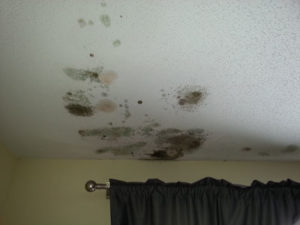 When you imagine mold growing in your home, how do you feel? Probably not very good. It’s one of those things we don’t really want to think about as homeowners—and when we see pictures of serious residential mold invasions, we shudder. We want to get a mold testing specialist on the line immediately, even if we haven’t noticed any warning signs in particular.
When you imagine mold growing in your home, how do you feel? Probably not very good. It’s one of those things we don’t really want to think about as homeowners—and when we see pictures of serious residential mold invasions, we shudder. We want to get a mold testing specialist on the line immediately, even if we haven’t noticed any warning signs in particular.
But there’s a problem. If you’re one of those homeowners who is especially “grossed out” by mold, you may be surprised to learn that it can never be eliminated from your home completely. That’s right—the air in your home probably has mold spores in it right now, and now matter how many professionals you call, you’ll never be totally rid of it.
Don’t panic! Mold is a natural part of the environment. As a matter of fact, a certain number of mold spores in the air is perfectly natural and poses no health risks at all. Mold is a natural part of biology and plays an important part in recycling biological matter. But it goes without saying—we all want to make sure the spore count in our homes is below the threshold and poses no threat to health or property values.
How exactly do you know if the levels of mold in your home are safe? The only way to be sure is by becoming a professional mold testing specialist yourself, or hiring one to assess your home. There are several reasons for this.
First, testing for mold particles in one area of the home will not necessarily tell you about spore counts in other areas of the home. This is why specialists have established methods for testing in multiple areas throughout the home. It gives them an accurate idea of what the mold situation actually is.
There’s also the question of what type of mold you have. You might have a higher than usual number of mold spores in your home, but the variety of mold might be harmless. On the other hand, you might be dealing with a moderately or even highly toxic form of mold, in which case even a relatively low number of spores can cause serious problems. To further complicate the issue, mold spores of the same species can have varying levels of toxicity, depending on a number of environmental factors.
Once spore counts pass beyond a certain threshold, there are no “safe” or “non-toxic” varieties of mold. Literally any species of mold will be toxic to the human respiratory and nervous systems if there’s enough of it floating around in the air.
That’s why it’s so important to get feedback from a mold testing professional. If it were as simple as buying a kit and looking at a single “readout,” every homeowner would be able to test for mold themselves. But accurate mold testing and remediation is a more specialized skill. It requires a broad range of skills and tools, along with years of training and experience, to assess the presence of this microscopic particles. The good news? Mold testing is affordable, and it only needs to be done periodically to stay on top of potential issues.

